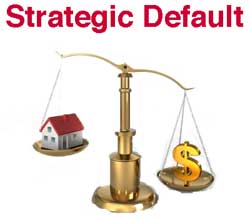30% Equity No Longer Required on Departing Primary Residence to Count Rental Income
Fannie Mae just announced a MAJOR guideline change for homeowners who want to convert their principle residence to an investment property and buy another primary home. Effective immediately, move up home buyers with less than 30% equity in their primary residence will now be able to count rental income.
Removal of the 30% equity requirement is a clear indication that Fannie Mae, which is essentially a government agency since they are still in conservatorship, is slowly relaxing guidelines, one by one, to help free up ‘land locked’ homeowners who want to buy a new primary residence, increase the sheer volume of home sales, and more easily buy a new home.
4 Ways This Will Help Move Up Buyers:
- Move up buyers will no longer have to make offers contingent on selling their home (unless they need or want the money from the sale for down payment).
- May not have to sell their home to qualify for a new purchase loan.
- Will qualify for more because they won’t be qualifying with two housing payments hitting their DTI ratio.
- Will no longer be forced to move and rent out their home in order to report rental income on their tax returns and that rental income allowed to offset the mortgage payment.
History Lesson: The Buy & Bail Scheme Days
Why did Fannie Mae implement the 30% equity requirement in the first place?
At the height of the financial crisis in 2008, homeowners looking to cash in on the massive loss in home equity, were participating in ‘buy and bail’ schemes. Buyers committing mortgage fraud would claim they are renting out their upside down home, lets say it had a $400,000 mortgage, purchase a larger less expensive new home down the street for half the price, and walk away from their upside down home.
In 2009, Fannie Mae and Freddie Mac soon imposed minimum equity requirements when departing a primary residence when buying a new home in an attempt to stop or slow down the ‘buy and bail’ scheme that many people benefited from. Fannie and Freddie required homeowners who had less than 30% equity in their departing home were no longer allowed to count rental income as qualifying income for their new home financing.
Even though upside down homeowners regained much of their lost equity from 2012 – 2014, Fannie Mae’s 30% equity requirement continued to keep move up buyers on the sidelines and home sales remained stagnant…..well below historical norms.
Our economy and housing market was relying on first time home buyers to step in and fill the void but it just wasn’t happening. This contributed to the shortage of inventory along with banks holding on to foreclosed properties.
100% of Rental Income Still is Not Counted?
Fannie Mae guidelines only allow for 75% of the rental income on departing residence be counted as qualifying income. This means if your current PITI housing payment (principle + interest + tax + insurance + HOA) is $2,000 and you rent out the home for $2,100/month, you have a monthly deficit or liability of $425 impacting your Debt-to-Income Ratio when qualifying on your new purchase loan.
$2,100 rent X 75% = $1,575
Subtract $1,575 from $2,100 = $425 liability
Bank are only allowed to count 75% of the rental income to account for other expenses landlords incur as well as possible months the home is not rented.
Reserves Still Needed to Qualify
 Move up buyers who retain and convert their principle residence into an investment property are still required to meet minimum reserve requirements set forth by Fannie Mae.
Move up buyers who retain and convert their principle residence into an investment property are still required to meet minimum reserve requirements set forth by Fannie Mae.
Documenting liquid reserves can range from 2-6 months for each property depending on whether you you receive DU Approval or need a manual underwrite, credit score, and loan to value on new home being purchased.
The automated DU findings will tell us exactly how much you need to document in reserves.
Departing Residence Still Upside Down in Value?
Question: What if my home is still upside down in value? Can I still convert it to a rental property and count the rent to offset the mortgage payment?
Answer: It’s possible that some (or many) lenders will continue to apply their own ‘overlay’ guideline and still forbid homeowners with less than 30% equity, or who are still upside down in value, to not count the rental income on the departing residence.
This is why it’s so important to work with a lender who simply accepts and underwrites loan applications according to Fannie Mae’s core guidelines. You don’t want to work with a conservative or fearful lender who makes qualifying for a loan more difficult than it already is.
Get Creative & Get the PreferredBuyer Advantage
If you are a homeowner who wants to convert your principle residence to an investment property and buy a new primary, today is your day!
Lets figure out how much you will qualify for with the least amount of down payment, find out how much you will need in reserves, determine if you are eligible for a down payment assistance grant for 2nd time home buyers, and get you out looking for a home to purchase before mortgage rates go up any higher or home values climb higher.
Find out the best way to submit an offer by using a PreferredBuyer Advantage Preapproval to protect and ensure a stress free loan approval and closing.
Call me directly at 951-215-6119 or contact me here to discuss your scenario.

No comments yet.